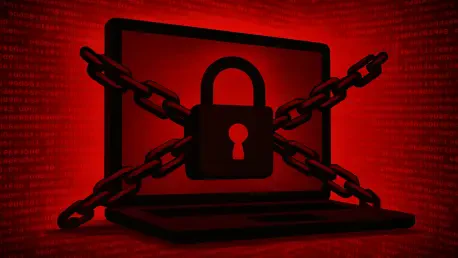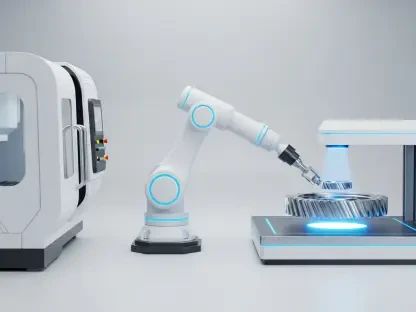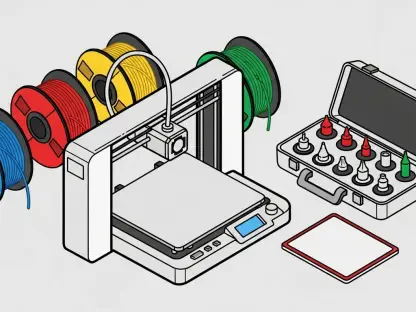In the rapidly evolving world of cybersecurity, the manufacturing sector has become a prime target for cybercriminals, particularly with the rise of Ransomware-as-a-Service (RaaS). Today, we’re diving deep into this pressing issue with Kwame Zaire, a renowned expert in manufacturing, electronics, and production management. Kwame provides crucial insights into the dynamics of cyber threats and shares strategies that manufacturers can adopt to safeguard their operations.
What factors have contributed to the significant increase in cyberattacks against the manufacturing sector in 2024?
The surge in cyberattacks this year can be attributed to several factors. Primarily, the ease of access to sophisticated ransomware tools via RaaS has lowered the entry barrier for cybercriminals. The manufacturing industry, often operating with legacy systems, presents an ideal target due to its vulnerability. Attackers are drawn to the tempting prospect of halting production lines and causing widespread disruption, which generates pressure on companies to pay ransoms quickly.
Can you explain the concept of Ransomware-as-a-Service (RaaS) and how it differs from traditional ransomware attacks?
RaaS represents a significant shift from traditional ransomware attacks. Instead of developing their own ransomware, attackers can now purchase or lease ransomware kits from developers. This model allows even less skilled hackers to launch attacks. Essentially, RaaS has democratized cyberattacks, making them accessible to a broader spectrum of individuals with malicious intent.
Why are manufacturers, particularly those with outdated or legacy systems, prime targets for these cyberattacks?
Many manufacturing systems, especially those not designed with cybersecurity in mind, are still in use for their critical production processes. These legacy systems are rarely updated with the latest security patches, making them soft targets. The attackers exploit known vulnerabilities, often found in older software, to gain unauthorized access.
How does the reliance on industrial control systems and the industrial internet of things (IIoT) contribute to the vulnerabilities in manufacturing cybersecurity?
Industrial control systems and IIoT devices are integral to modern manufacturing, providing efficiency and automation. However, they also introduce vulnerabilities because they are usually interconnected and may lack robust security protocols. Attackers can exploit these weaknesses to infiltrate the network, causing disruptions that can cascade through the entire production line.
What challenges do manufacturers face in detecting and neutralizing RaaS attacks?
One of the biggest challenges is the sophistication of RaaS attacks. They are designed to evade traditional detection methods, and many manufacturers lack the resources to invest in the necessary defense technologies. Moreover, the sheer volume of alerts generated by these automated systems can overwhelm the IT teams, making it difficult to differentiate between legitimate threats and false positives.
In what ways does the RaaS business model expand the pool of potential attackers?
By packaging ransomware as a ready-to-use service, RaaS opens the door to individuals who may not possess technical expertise in cyberattacks. They don’t need to understand the intricacies of creating malware, as the service provider handles the development and deployment, expanding the potential attacker base significantly.
How important is operational resilience in the supply chain for manufacturers, and what impact can a single cyber disruption have?
Operational resilience is critical in mitigating the effects of cyber disruptions. A single breach can halt production, resulting in significant financial losses and damaging reputations. In today’s interconnected supply chains, the ripple effects of a cyber incident can cause delays and disruptions not just within one company but across multiple suppliers and clients.
Can you describe the specific ransomware attack on the mid-sized car care manufacturer in January 2024, including how it spread and the outcome?
The attack on the car care manufacturer began with compromised credentials, which allowed attackers entry into the network. Over a weekend, the ransomware rapidly spread from the initial access point to hundreds of devices, exploiting unprotected machines. While the attack caused significant concern, the company had enough security measures in place to prevent full machine encryption, allowing them to eventually restore many of the affected devices.
What traditional security measures were in place during the attack, and how effective were they in limiting damage?
Traditional security measures like perimeter defenses were active during the attack. Despite the spread, these existing systems prevented complete encryption of all devices. The company’s IT team was able to restore most affected systems, demonstrating that while traditional measures were not foolproof, they provided a necessary stopgap.
Why are traditional perimeter security measures inadequate against modern cyber threats in manufacturing?
Modern threats, especially those leveraging RaaS, are adept at bypassing traditional perimeter security. The increasing deployment of IIoT devices, which often lack inherent security features, along with the convergence of IT and OT environments, makes it difficult for perimeter defenses to protect the entire network against internal and external threats.
What are the five best practices manufacturers should adopt to bolster their cybersecurity defenses?
Manufacturers should adopt a multi-faceted security approach including deploying multilayered email security, enforcing multifactor authentication, automating incident response, educating employees on security protocols, and securing and regularly backing up data. These practices create a layered defense mechanism that can mitigate or prevent many cyber threats.
How does multilayered email security aid in protecting against cyber threats, and why is it necessary to regularly review email security settings?
Multilayered email security is crucial as it adds depth to defenses against phishing and other email-based attacks. Regular reviews of email security configurations are necessary to ensure these systems adapt to evolving threats. As attackers refine their techniques, maintaining an updated and robust email security protocol is essential for blocking harmful links and attachments before they reach users.
What role does multifactor authentication (MFA) play in enhancing cybersecurity for users’ accounts in manufacturing?
MFA provides an additional security layer by requiring two or more verification steps to gain access. This means even if a password is compromised, unauthorized users would still need to bypass further authentication steps, significantly reducing the risk of unauthorized access.
How do automated incident response tools function, and what benefits do they offer in managing cyber threats?
These tools use artificial intelligence to detect and respond to cyber threats in real time. By automating the identification and containment of suspicious activities, they reduce the burden on IT teams and speed up threat mitigation, allowing faster recovery and minimizing potential damage.
Why is employee education and training vital in cybersecurity, and how can phishing simulations enhance this training?
Employees are often the first line of defense against cyber threats. Education and training ensure they recognize and respond appropriately to suspicious activities. Phishing simulations are practical tools in this regard, providing hands-on experience to employees, improving their ability to identify phishing attempts and assess vulnerabilities within the workforce.
How does securing and backing up data protect manufacturers from ransomware attacks, and what are common issues encountered during data restoration?
Regularly securing and backing up data ensures that businesses can recover essential information after an attack, reducing downtime and impact. Common issues during restoration include discovering corrupt backups or incomplete data sets, emphasizing the need for regular testing and validation of backup protocols.
What steps should manufacturers take to ensure a smooth recovery in the event of data loss?
Conducting regular data recovery drills and simulations is vital. Manufacturers should ensure all backups are complete and retrievable, and that recovery plans are well-documented and updated. This preparation helps identify potential recovery issues before they cause operational disruptions during an actual event.
Given the prevalence of outdated systems in manufacturing, what proactive tools are recommended to defend against cyber threats?
Manufacturers should look into advanced endpoint protection systems and employ real-time threat intelligence tools. Another key aspect is regularly updating systems, even legacy ones, as much as possible, to patch vulnerabilities. Proactive monitoring solutions also help detect and respond to threats more effectively.
How can real-time threat intelligence aid manufacturers in maintaining cybersecurity resilience?
Real-time threat intelligence provides up-to-date information on emerging threats, allowing manufacturers to respond promptly to vulnerabilities and potential attacks. This foresight is crucial in adapting security measures swiftly to protect critical infrastructure continuously.
What lessons can be learned from the recent surge in cyberattacks in terms of updating cybersecurity strategies for manufacturers?
The key lesson is the necessity of evolving and adapting cybersecurity strategies to match current threats. Manufacturers should prioritize creating proactive security infrastructures, regularly updating their systems and processes, and fostering a culture of cybersecurity awareness and resilience across their organizations.









